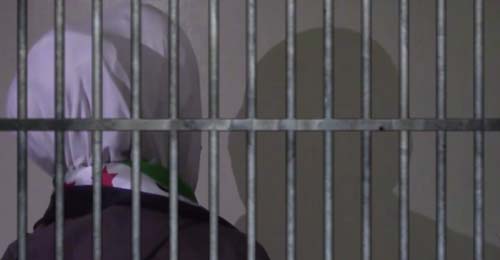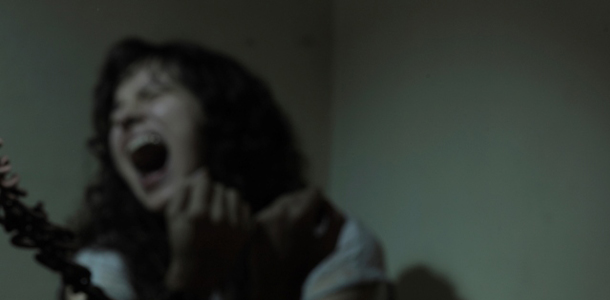Trapped and Abandoned: The Experience of Female Detainees in Syria

"Here in this prison, Hafez al-Assad banned God. The guards say, ‘We are God; your life and death are under our control.’"
This phrase has long echoed in the ears of new prisoners from the Syrian regime’s security men in the Tadmur Prison in Palmyra, the country’s most notorious jail. This phrase summarizes the policy which operates in Syrian prisons in general, and against political prisoners in particular. This has been the experience of political prisoners since the late seventies and early eighties, when a large political movement emerged, led by the Muslim Brotherhood and left-wing parties opposed to Ba’ath rule. This political movement was accompanied by a huge wave of arrests by the regime of all of those affiliated with the opposition groups. The inhuman practices and systematic torture of these political prisoners became well known in all prisons of the Syrian intelligence agencies, and particularly in Tadmur Prison and Sednaya Prison in Damascus.
These brutal practices have led to widespread fear and panic among the population. Syria has been turned into a police state controlled by merciless security branches, and led by notorious officers who have unlimited powers and no accountability.
Women in Syria have not been immune from this practice and have also been subjected to security prosecution and arrest. In the 1980s, many female members of the Community Action League, which participated in the large opposition movement in Syria, were subjected to interrogation and detention, as well as all kinds of physical and psychological abuse. Female members were sentenced to many years in prison for their political affiliation. As a means to exert pressure on members of the Muslim Brotherhood, their wives and female relatives were also arrested and detained in prisons, often on charges of belonging to the banned Islamist organization.
The revolutions of the Arab Spring as well as the fall of some Arab regimes, had given Syrian people a glimmer of hope to change their reality and establish a civil democratic state. The Syrian revolution in March 2011 marked a turning point in the history of Syria. Syrian women participated alongside men in the popular protests demanding freedom and democracy. However, regime campaigns have targeted and detained prominent women and female activists, as well as female relatives and the wives of young men who were pursued by the Syrian Security Agencies. These practices are reminiscent of the barbarous acts of oppression that were committed by the former president of Syria, Hafez al-Assad during the 1980s, and which continue to be practiced by his son Bashar al-Assad.
A quick look at Syria’s female detainees since the beginning of the revolution in 2011 shows the systematic method the Syrian regime used during its campaign of arrests, in which female activists across different ideological, political and sectarian affiliations were targeted. In order to suppress the revolution and prevent its progress, the Syrian regime launched a campaign of arrests. This campaign also targeted women who did not directly participate in the Syrian popular movement, but were nonetheless arrested under the pretext that they represented the social incubator of the revolution. Women were also arrested so they could be used to pressure their male relatives, or to hold them hostage and use them for bargaining purposes. In addition, there were waves of arrests and violence carried out by security men who abused the powers granted to them and arrested women purely out of their own personal interests.

Detention and release
Detention begins in one of the State’s security branches. This is the most difficult and dreadful stage of the process. The female detainee is incarcerated in either solitary confinement or with one other woman. The detainee is subject to all kinds of insults and physical torture - beatings by sticks and cables, electric shock, the “al-Shabah” (where a prisoner’s hands are shackled and she is suspended from the ceiling), and sometimes sexual assaults in front of her relatives – all in order to extract a confession from her. These brutal practices go far beyond physical torture. Psychological abuse and extortion by threat of physical harm is also practiced. The detainee is used as a means to exert pressure on her husband or family members so that they surrender to the security authorities. In other cases, the detainee is forced to make certain confessions that are far from the truth by torturing her relatives in front of her. After this, she faces one of the following options: 1) she is released from prison or 2) she is put on trial and may be deported to a civilian prison where she is placed with female prisoners on charges of prostitution, drugs and other criminal offences. Here again she is subjected to all forms of abuse and harassment.
After the detainee is released from prison new chapters of suffering begin, the extent of which depends on the social environment that surrounds her. For example, a student will be forced to leave her university and an employee will be unlawfully terminated from her job. The woman is highly stigmatized in society and her reputation is abused, especially in more conservative areas. It is common that a released female detainee becomes outcast in society. Nobody wants to marry her because of the possibility that she was sexually abused inside prison. Sometimes, she may even be rejected by her family for fear of the shame. Many female detainees, if they are married before their arrest, face cases of divorce, which lead to a multitude of new problems. Therefore, it is common for a released female detainee to hide the circumstances of her arrest and her experience in detention.
Violations against women during the detention period, in addition to the social pressure they face afterwards, lead to psychological crises that cannot be easily overcome in a society that does not differentiate between a prisoner of conscience and a criminal.
The most prominent symptoms that persist after the detainee's exit from prison are depression, obsessive-compulsive disorder, anxiety and fear. These symptoms directly affect the woman, especially how she treats her children and how she perceives herself and her surroundings. These problems are still not adequately addressed by institutions and organizations concerned with providing psychological support.
Although detention of female prisoners is most common in the regime's torture prisons, there are also instances of female journalists and activists being detained in opposition-held areas. Furthermore, women who refuse to comply with the strictly imposed Islamic code of behavior and dress in such areas are arrested by ISIS and Hayyat Tahrir al-Sham (formerly al-Nusra Front). The violations practiced within these prisons vary according to the dominant factions. The report of the Syrian Network for Human Rights, published on 8 March 2017, stated that, “To date, 7,571 women, of whom 504 are girls, have been subjected to detentions and enforced disappearances by the main actors in Syria.”
The number of detained women and girls can be broken down as follows:
5,858 female detainees (81% of all detainees) have been held by the Syrian regime.
813 female detainees (12% of all detainees) by the armed opposition.
345 female detainees (4.5% of all detainees) by Isis and Hayyat Tahrir al-Sham.
61 female detainees (1.53% of all detainees) by Kurdish units.
International and regional pressure put on the Syrian regime to release female detainees has gone down the drain because the regime can seemingly do whatever it wants without being held accountable. For example, the United Nations Security Council has watched the regime commit heinous massacres against innocent people, yet has done little in response. If such a powerful organization remains silent to such crimes, it is an incredibly difficult task for others to successfully push the regime to release detainees.

Pressure and negotiations have also taken place through regional mediators, such as Qatar's Foreign Minister Khalid bin Mohammad al-Attiyah. These were stronger in effect than the international community's attempts. One relative achievement was when a group of Greek Orthodox nuns (who were taken prisoners by al-Nusra Front in St. Takla Monastery in Maaloula in the governorate of Rural Damascus in December 2014) were freed as part of a prisoner exchange involving 150 women and children who had been held by the Syrian government. However, this success was an exception, and there have been countless occasions when women have been left to languish. For example, when Suqour al-Ezz, al-Nusra Front and ISIS imprisoned women from Alawite villages, during the battles of the Turkmen Mountain region, near the Turkish border in August 2013, the Syrian regime took no serious action. Another incident was when Islamic factions swept through the city of Adra near Damascus, and captured a number of women, but the Syrian regime refused a prisoner exchange.
A number of international covenants affirm in general terms the prisoner's right to be treated with humanity and respect for their inherent dignity. Such covenants emphasize the need to provide health and hygiene facilities in the place of detention, and to provide medical care for prisoners. In view of the special needs of women, they outline certain provisions that are tailored to their situations. These include the need for providing women with sterile sanitary towels; pregnant women should receive periodic medical examinations and specific nutrients during pregnancy and lactation; and childbirth should take place in a civil hospital without mentioning the name of the prison on the child’s birth certificate. Furthermore, mothers should be allowed contact with their children.
It is well known that the treatment and conditions of detention in criminal cases are much better than political cases, and that the violations and brutal practices against detained Syrian women are arguably among the worst in the world. All international organizations fighting for human rights, especially women’s rights, have not intensified their efforts and programs to protect Syrian women and to ensure their rights.
The female detainees file remains a difficult file to address. It is also difficult to document the violations committed against female detainees because the women, and their families and relatives tend to be secretive about the subject due to the fear of social stigma. In addition, there is a (justified) lack of confidence in the ability of the United Nations and its active organizations on the ground to exert pressure on the Syrian regime to release detainees or to improve the conditions of detention in general.
So far, the Syrian women who have been detained, tortured and humiliated suffer the consequences of detention all alone in a ruthless society.



